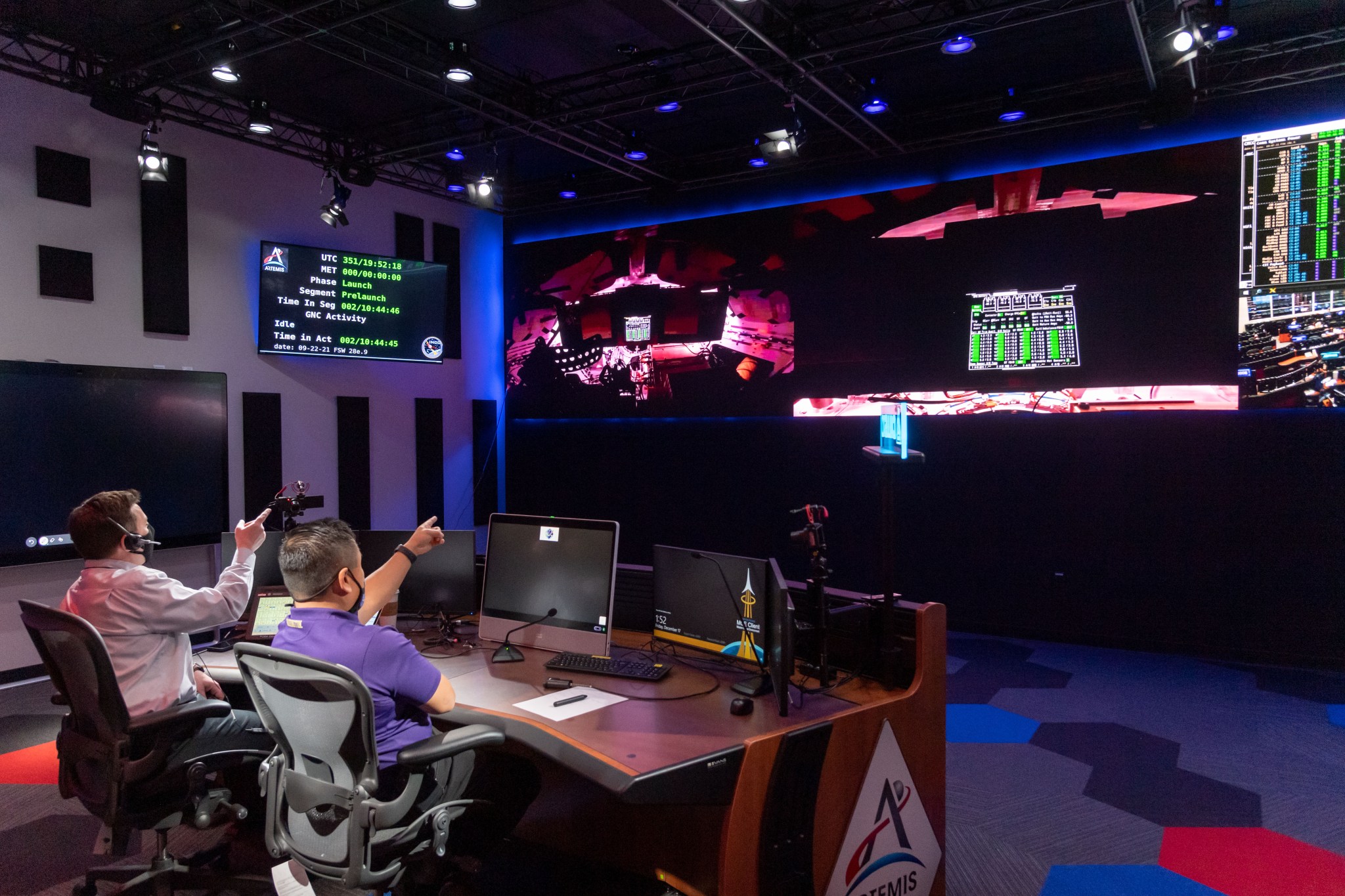By Erika Peters
NASA Johnson Space Center
Flying on NASA’s Orion spacecraft during the uncrewed Artemis I mission will be Callisto, a technology demonstration developed through a reimbursable space act agreement with Lockheed Martin. Lockheed Martin has partnered with Amazon, and Cisco to bring the Alexa digital assistant and Webex video collaboration aboard Orion’s first flight test in deep space.
Named after a mythological Greek goddess and one of Artemis’ hunting attendants, Callisto is meant to show how commercial technology could assist future astronauts on deep space missions. The payload will demonstrate how astronauts and flight controllers can use human-machine interface technology to make their jobs simpler, safer and more efficient, and advance human exploration in deep space.
“I can imagine a future where astronauts can access information on flight status and telemetry — such as spacecraft orientation, water supply levels or battery voltage status, through simple voice commands,” said Howard Hu, deputy Orion program manager at NASA’s Johnson Space Center in Houston. “Orion is already the most advanced spacecraft ever developed to carry astronauts to the Moon, and voice activation technology could take it to the next level by enabling the interactive computer systems of science fiction spaceships to become a reality for the next generation of explorers.”

The industry-funded payload will be located on Orion’s center console and includes a tablet that will test Webex by Cisco video conferencing software to transmit video and audio from the Mission Control Center at Johnson, and custom-built hardware and software by Lockheed Martin and Amazon that will test Alexa, Amazon’s voice-based virtual assistant, to respond to the transmitted audio.
The Alexa flying on Orion isn’t just your standard, off the shelf, device. To function on Earth, Alexa uses the “the cloud,” or software and services that run on the internet, located on computer servers in data centers all over the globe. Traveling in deep space, it would take too long for Alexa on Orion to use the cloud back on Earth, so Callisto will use NASA’s Deep Space Network and a local database aboard the spacecraft to communicate with Alexa and respond. The payload’s on-board hardware has been hardened to protect it for the radiation environment on Orion’s deep space journey.
Webex will connect and conference the onboard tablet with Webex devices and whiteboards inside a room in the Mission Control Center, demonstrating how video collaboration, with compression technology, can be used over the Deep Space Network.
Without astronauts aboard the spacecraft, the industry partners provided unique hardware that will allow operators to interact with Callisto and evaluate performance throughout the mission from a payload operations room in mission control. Participants will assist with the demonstration by asking Alexa a question or delivering a task command in front of a console with a camera and microphone. Their images and voices will be broadcast from mission control to Orion, where video of the participants will be displayed on the tablet, and audio played from the speaker, and then Alexa will capture the audio and respond.
Cameras inside the spacecraft will record the entire interaction and relay it through the network back to the room in mission control where participants can also see and hear the session. Lockheed Martin and its partners will also use the technology demonstrated with this payload to offer STEM engagement opportunities and to publicly share some of testing sessions live.
As humans travel farther into space, this technology could enable astronauts to operate more independently from Earth. Similar technology could be used on the Gateway, a multi-purpose outpost orbiting the Moon, or for missions to Mars. For example, astronauts could ask a voice activated device to talk them through a procedure, with the device potentially lighting up the area of focus inside the spacecraft.
Follow the journey on Artemis I as Orion launches on the Space Launch System rocket to travel around the Moon and back to Earth over several weeks for the first in a series of increasingly complex missions. Artemis missions at the Moon will allow NASA and its partners to practice procedures and test technologies needed to explore farther into the solar system in preparation for human missions to Mars.
Follow NASA’s Orion spacecraft for updates during the mission at:
Learn more about NASA’s Moon to Mars exploration approach:


























